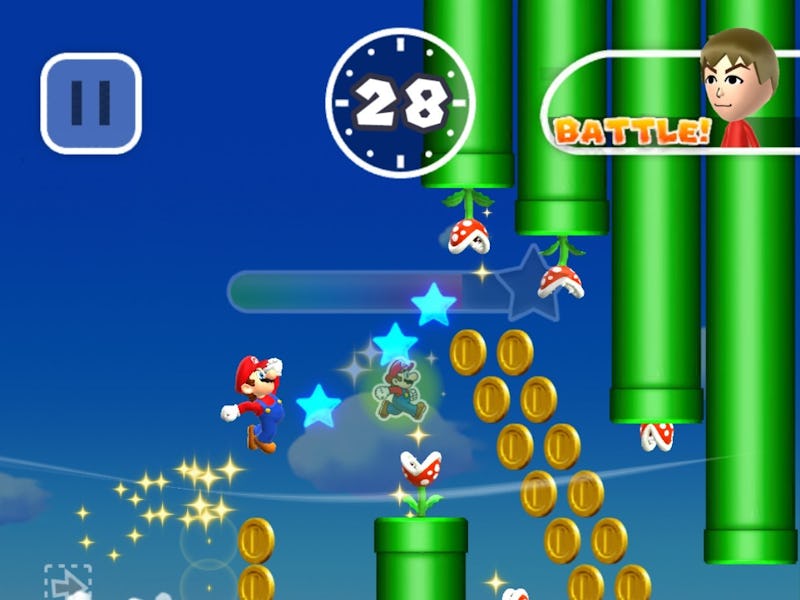There’s a beauty to a good Mario level. Level design in general is an art that can often be overlooked in favor of general direction, mechanics, or narrative. There’s no shortage of well-crafted analyses out there for World 1-1 in Super Mario Bros., however, and most Mario games do a bang up job of iterating on that early success. Super Mario Run is no different.
Super Mario Run is described as an “auto runner” rather than an endless runner because, well, it’s not endless. Mario starts running, he keeps running, but he eventually stops. Additionally, the ability to jump in such a way as to head in different directions (mostly during boss battles, but in other circumstances as well) technically disqualifies it. The distinction is important because it means the game’s levels aren’t that far from a traditional Nintendo design.
Just look at how happy he is.
In fact, one could argue that Super Mario Run is a quintessential Nintendo game in different packaging. It’s not like you could go back after progressing across the stage in the original Super Mario Bros. game. The difference between the side-scrolling games of yore and the auto runner out on iOS isn’t as huge a gap as it might seem at first. The little changes alter how Mario traverses the landscape, but not fundamentally.
The biggest debt of gratitude owed by Super Mario Run might in fact be to Super Mario Maker. The Wii U game, now also available on the Nintendo 3DS, allowed players to create their own Mario levels. All of the building blocks were made available along with the digital equivalent of graph paper. As with anything that grants users tools like these, there was an outpouring of creativity in all directions.
Toad Rally is a menace.
It’s hard now not to look back on Super Mario Maker as a testbed of sorts for future Mario games. There’s even a good amount of auto runner-style levels. Nintendo managed to sell a piece of focus group equipment to thousands of people, and now they’ve surely got the data to break down preferences in a fairly granular way. (If you don’t think Nintendo’s taking lessons away from the success of Super Mario Maker, you have not been paying attention.)
There are certainly criticisms to make of Super Mario Run. The formula for the game loses a bit of the charm that makes Mario, well, Mario for a lot of people. The model of downloading the first three stages and then buying the game for $9.99 hasn’t sat well either. But looking at what the game does, how Mario traverses levels, and saying, “This isn’t a Mario game,” is too far. It’s absolutely a Mario game. In fact, it just might be a new standard, and that’s more than fine.
Even the 'Super Mario Run' logo is adorable.
